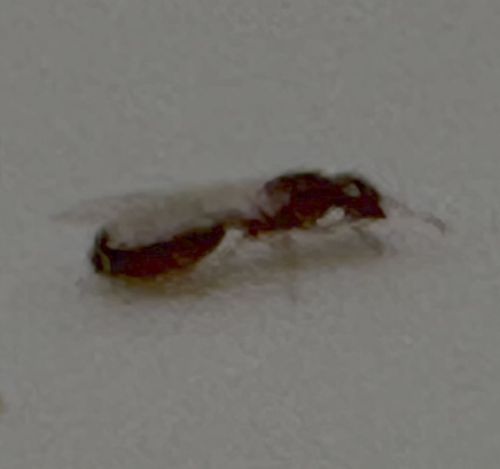Odorous House Ant
Scientific Name: Tapinoma sessile
Order & Family: Order: Hymenoptera, Family: Formicidae
Size: Workers are typically 2.0 to 3.0 mm (0.08 to 0.12 inches) in length.

Natural Habitat
Odorous house ants can be found indoors and outdoors. Outdoors, they nest under rocks, logs, mulch, debris, or in soil, often near sources of moisture. Indoors, they typically nest in wall voids, under floors, in insulation, or around pipes and leaky fixtures.
Diet & Feeding
These ants are omnivorous generalists. They feed on a wide variety of foods, with a preference for sweets (like honeydew produced by aphids or sugary household items) but also consume proteins and fats.
Behavior Patterns
Odorous house ants are known for their strong, rotten coconut-like odor when crushed. They scavenge for food and water, often entering homes, especially during warm weather or after rain. They establish trails between their nests and food sources. Colonies can be quite large, with multiple queens, and they can relocate quickly if disturbed.
Risks & Benefits
Risks: Primarily considered a nuisance pest in homes. While they do not bite or sting, they can contaminate food and are difficult to eradicate once established. They can also farm sap-sucking insects like aphids, potentially harming garden plants. Benefits: As with most ants, they play a role in soil aeration and decomposition, and can be a food source for other predators.
Identified on: 8/9/2025